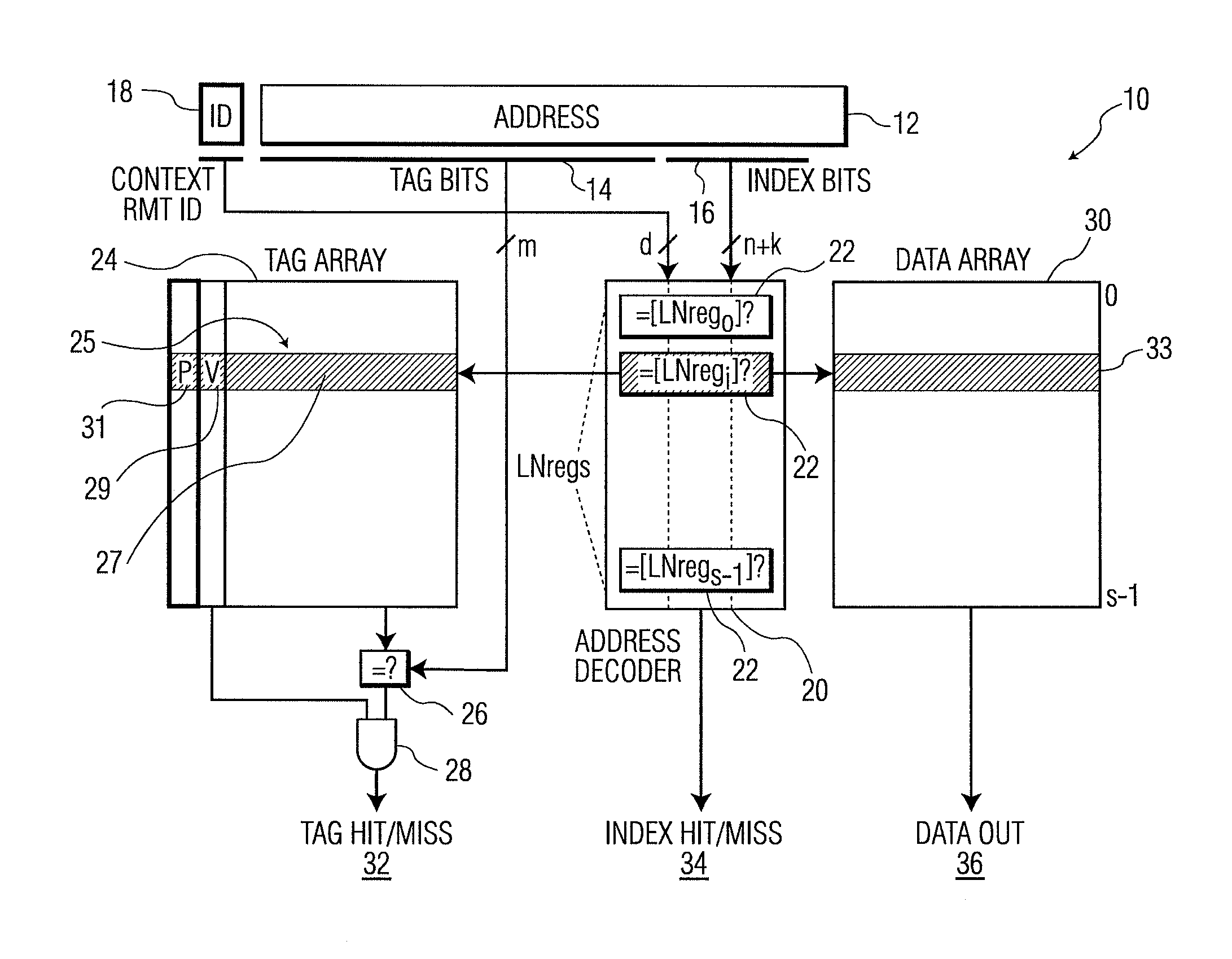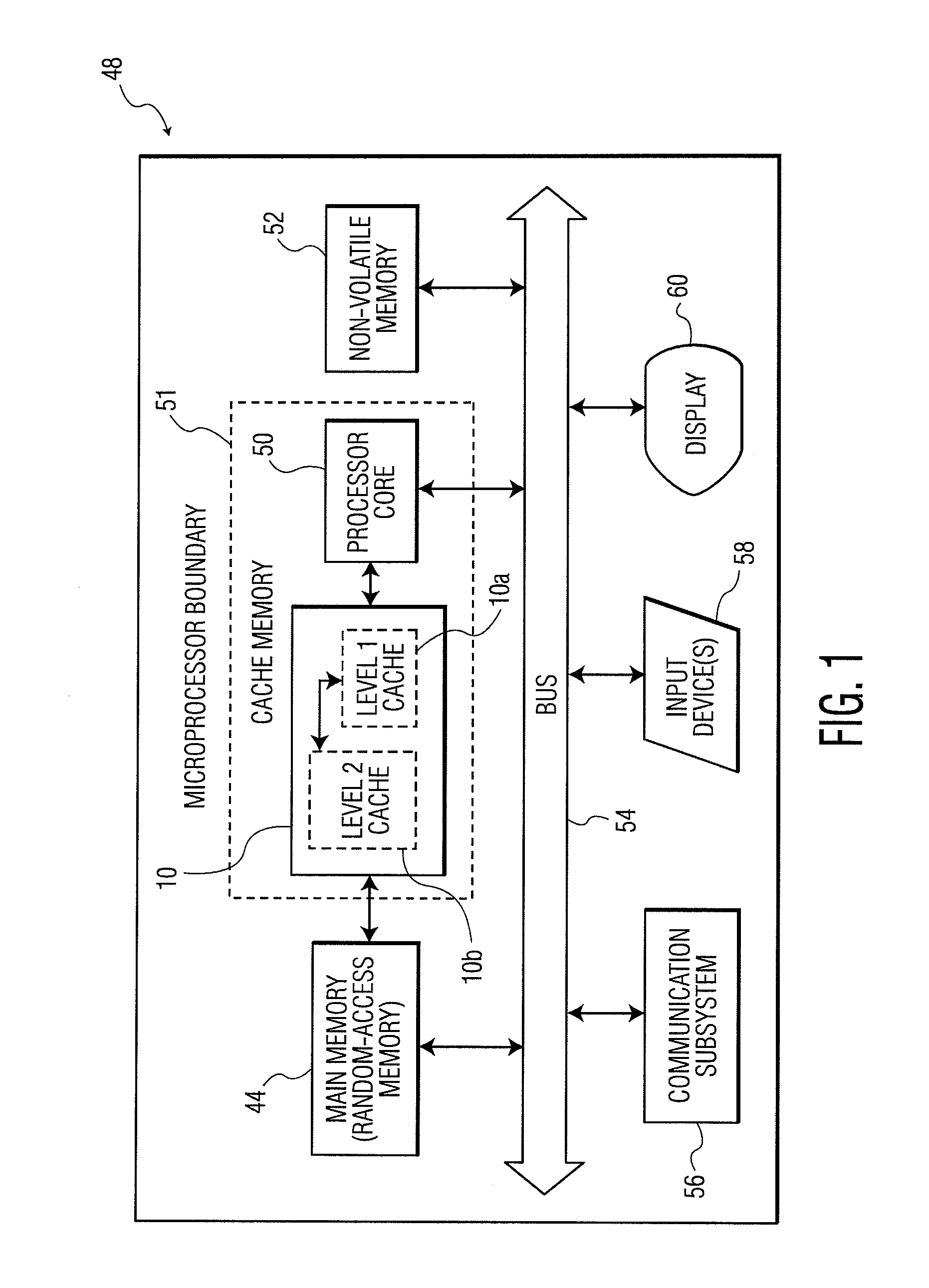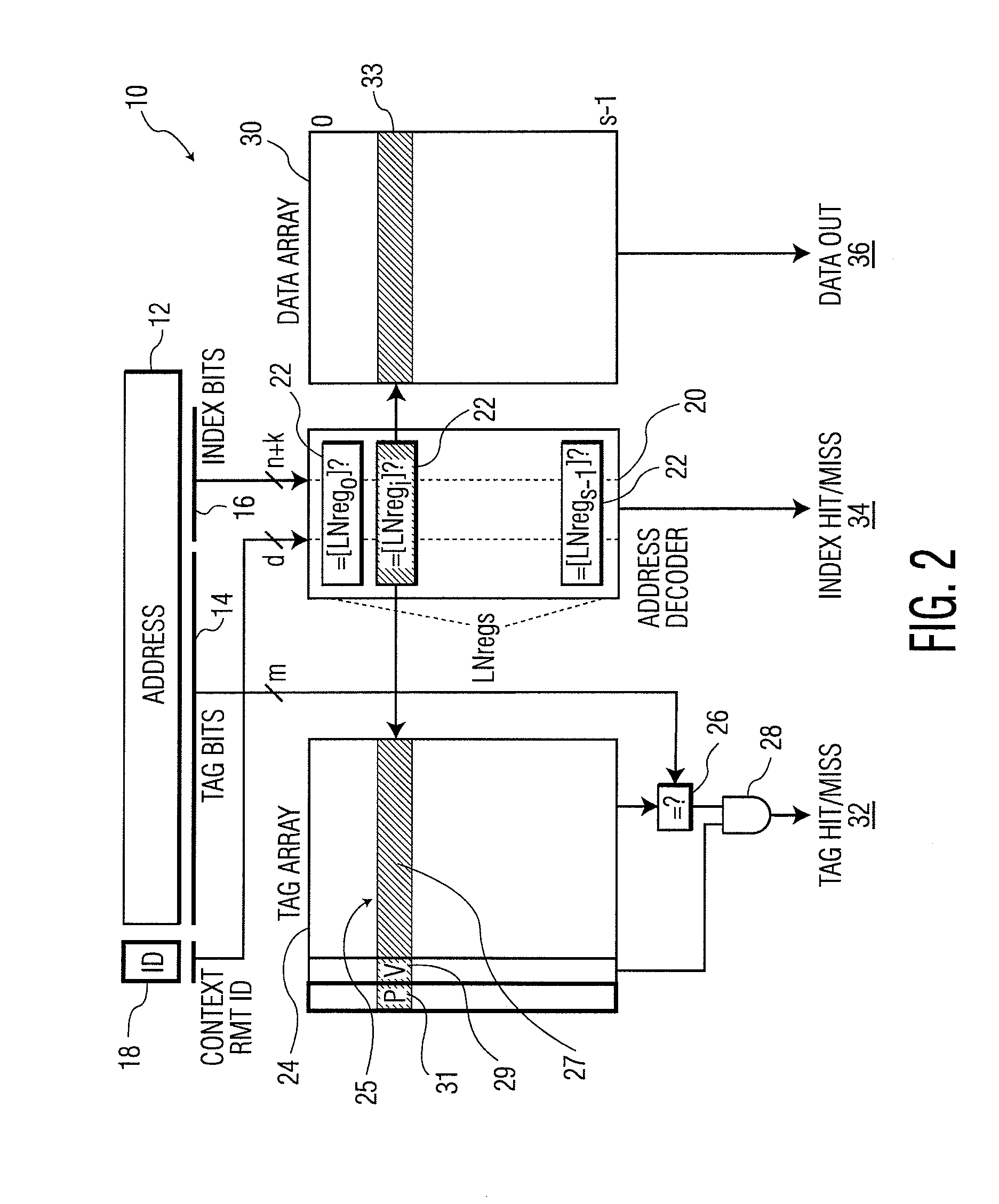Cache memory having enhanced performance and security features
a security feature and cache memory technology, applied in the field of computer memory, can solve the problems of high miss rate, high cost of increased access time and power consumption, and poor security of data lines, so as to enhance performance and security features, enhance performance, and enhance security. the effect of data lines
- Summary
- Abstract
- Description
- Claims
- Application Information
AI Technical Summary
Benefits of technology
Problems solved by technology
Method used
Image
Examples
Embodiment Construction
[0025]The present invention relates to a cache memory, as discussed in detail below in connection with FIGS. 1-12.
[0026]FIG. 1 is a block diagram showing the cache memory 10 of the present invention, implemented in a computer system 48. As discussed below in greater detail, the cache memory 10 allows for dynamic mapping of contents from a main memory 44, so as to provide enhanced security and performance. The cache memory 10 could include a single type of cache memory, or two types of cache memory, such as level 1 cache memory 10a and level 2 cache memory 10b, as shown in FIG. 1. The cache memory 10 communicates with the main memory 44 and a processor core 50. As in many modern microprocessors, the processor core 50 and the cache memory 10 could be provided in the same processor chip; that is, within the boundary 51 of the microprocessor chip. Also, the cache memory 10 could be external to such a microprocessor chip, and in communication therewith.
[0027]The computer system 48 could ...
PUM
 Login to View More
Login to View More Abstract
Description
Claims
Application Information
 Login to View More
Login to View More - R&D
- Intellectual Property
- Life Sciences
- Materials
- Tech Scout
- Unparalleled Data Quality
- Higher Quality Content
- 60% Fewer Hallucinations
Browse by: Latest US Patents, China's latest patents, Technical Efficacy Thesaurus, Application Domain, Technology Topic, Popular Technical Reports.
© 2025 PatSnap. All rights reserved.Legal|Privacy policy|Modern Slavery Act Transparency Statement|Sitemap|About US| Contact US: help@patsnap.com



